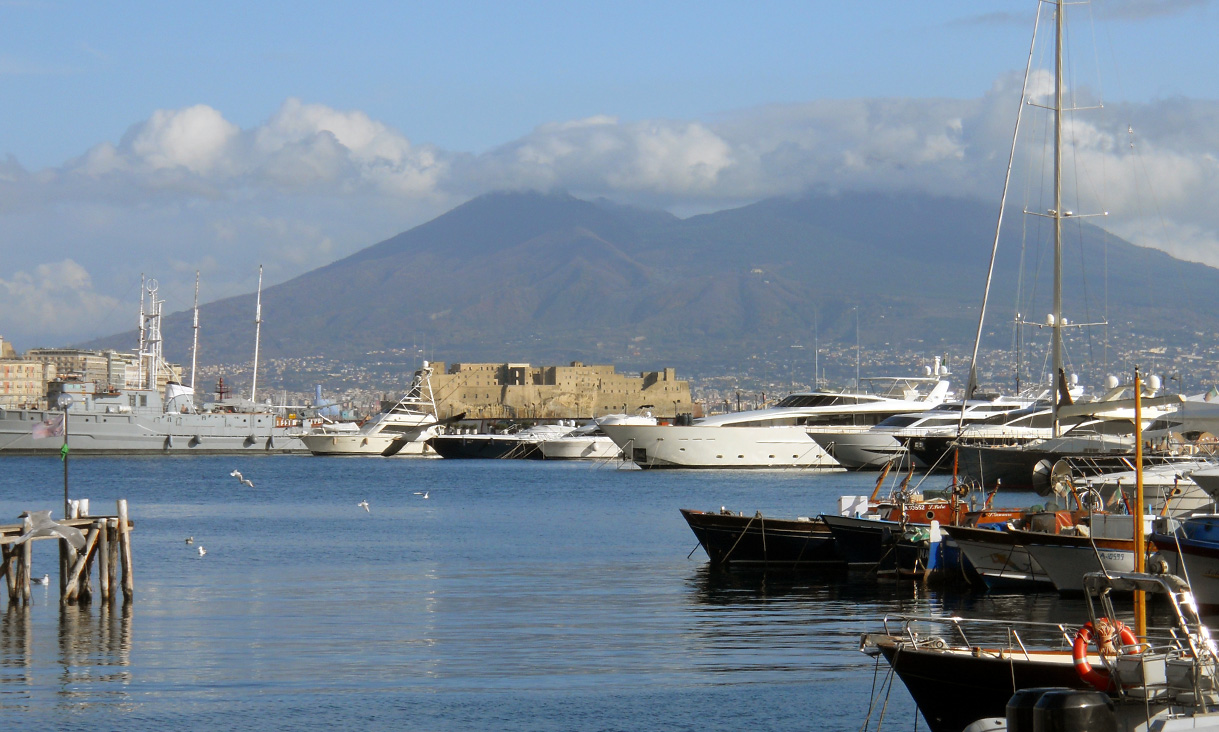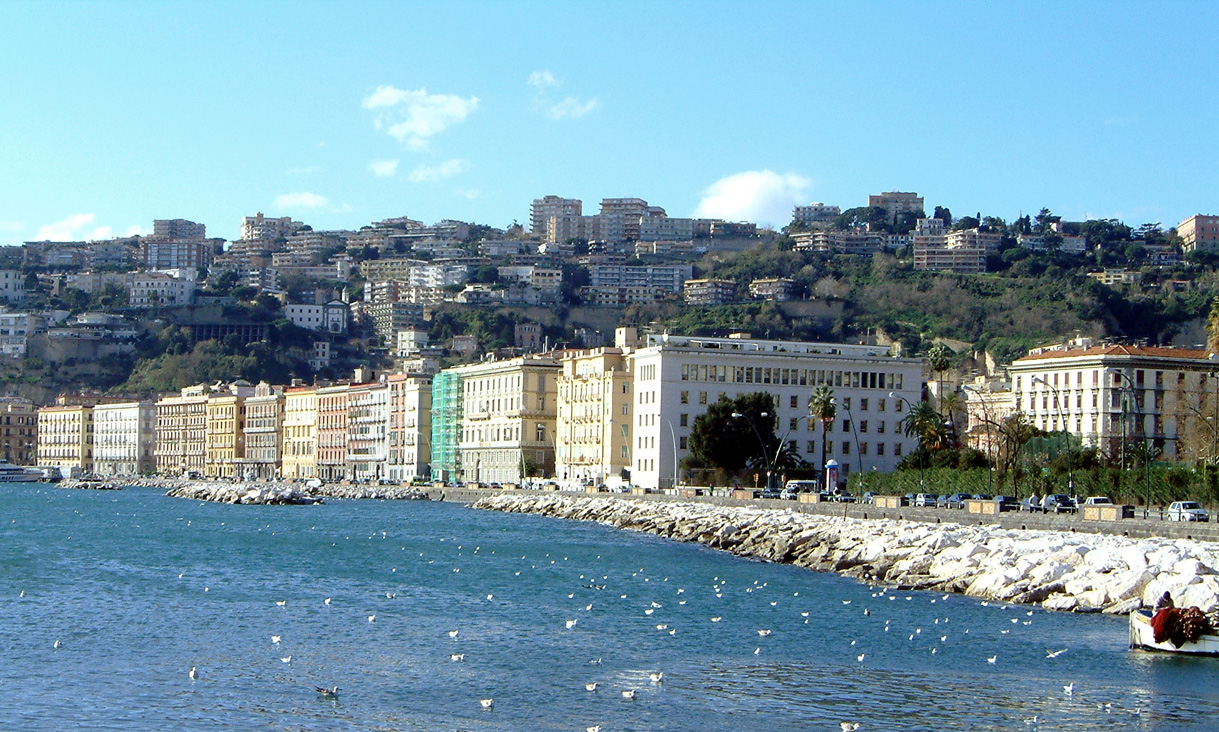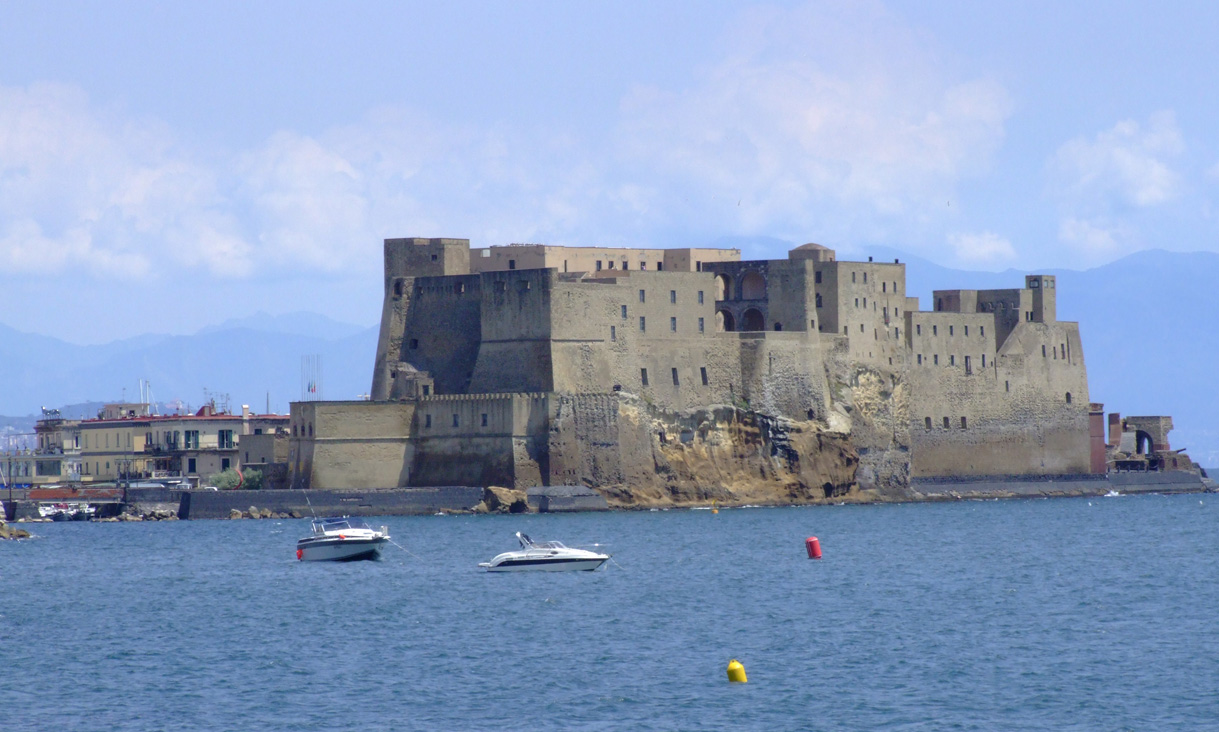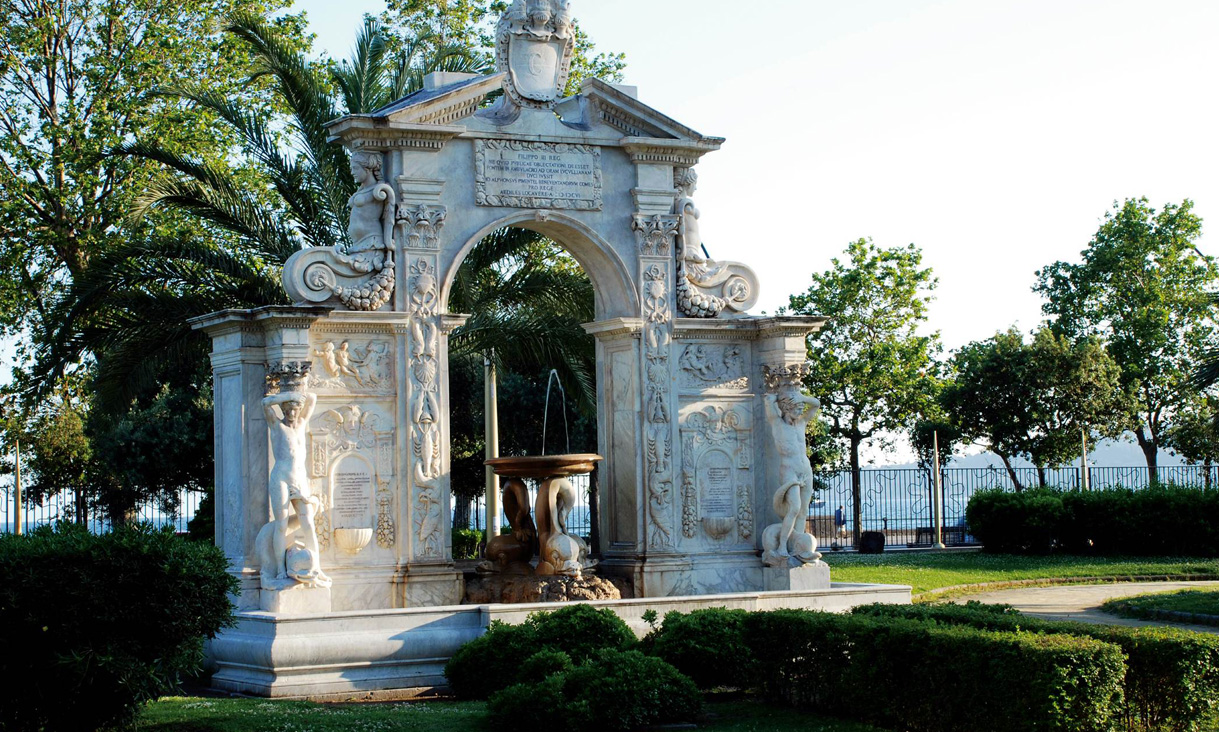Mergellina e il Castel dell’Ovo
Mergellina (Margellina in Naples) is an area of the city of Naples, in the Chiaia district, which stretches from the deep Sermoneta and Torretta, licking Piedigrotta and the Riviera di Chiaia.
It is located by the sea, at the foot of the hill of Posillipo. Its very name is related to the position of the Gulf: derives from the term “mergoglino” (waterfowl).
From the port of Mergellina (formerly of fishermen, tourism today, with Luise wharf that serves as a place of walking on the sea) depart daily hydrofoils to the islands of the gulf.
Mergellina is also characterized by the ramps of St. Anthony, arranged by the Viceroy Medina de las Torres in 1643, rising from the northern edge of the square Sannazaro and take their name from the church of St. Anthony in Posillipo, located on their top.
There are also the ancient lion fountain (also called the Mergoglino) along Via Mergellina, the nineteenth-century fountain in Piazza della Sirena Sannazaro and the church of Santa Maria del Parto, founded (on a farm had a gift from Frederick of Aragon ) by the poet Jacopo Sannazzaro, buried there. The temple is located on top of popular restaurants destination for connoisseurs of the city and not, among them the renowned Carminuccio Mergellina famous tavern fishing family.
The Castel dell’Ovo (castrum Ovi, in Latin), is the oldest castle in the city of Naples and is one of the elements that stand out most in the famous view of the gulf. Because of different events which partially destroyed the original appearance thanks to Norman and subsequent reconstruction work that took place during the Angevin and Aragonese, the architectural line of the castle changed drastically until you get to the state where it is today.
The castle stands on the islet of tufa Megaride (greek: Megaris), natural offshoot of Mount Echia, which was joined to the mainland by a narrow isthmus of rock. This is the place where it was founded in the eighth century BC Partenope, hands Cumana. During the sixth century BC, the plateau below arose the new residential area (“Neapolis”). The oldest part of the city was called “Palepolis” (old town) and fell into disuse in the IV-III century BC
On the islet of Megaride, already at the end of the fifth century, settled by the Basilian monks called Pannonia by a matron Barbara with the relics of Abbot Severino. Allocated initially in scattered cells (called “hermitages Basilian”), the monks adopted in the seventh century, the Benedictine rule and created an important scriptorium (having probably also what was left of the culinary library).
The monastery, however, was destroyed at the beginning of the tenth century by the Dukes of Naples, to ensure that there will fortify the Saracens using it as a base for the invasion of the city, while the monks retired to Pizzofalcone.
In 872, at the time called on the islet of San Salvatore Saracens imprison Bishop Athanasius I, but the joint effort of the fleets of the Duchy of Naples and the Amalfi Republic frees the bishop and drive out the Muslims. [6] In a document of 1128 in the site is again cited a fortification called Arx Sancti Salvatoris from the church of San Pietro, who had built the monks. Witness the settlement of Basilian monks is precisely what remains of this church, founded by the monks themselves and whose earliest records date back to 1324. The only major architectural element left is the entrance preceded by the great arches of the portico.
Roger the Norman, winning Naples in 1140, made of Castel dell’Ovo its seat. The residential use of the castle but was being used only on a few occasions since, with the completion of Castel Capuano, were moved there all the lines of development and trade to earth. With the Normans, began a program of systematic fortification of the site, which was in the tower Normandy her first bulwark, and it was the one where the flags were waving.
With the passage of the kingdom to the Swabians through Costanza d’Altavilla, Castel dell’Ovo is further strengthened in 1222 by Frederick II, making it the seat of the royal treasury and does build other towers – Colleville tower, tower and tower Maestra Middle . In those years, the castle became a royal palace and state prison.
King Charles I of Anjou moved to New Castle (Angevin) the court. Nevertheless maintained at Castel dell’Ovo – which at this time is beginning to be called chateau de l’Oeuf or castrum Ovi enchanted – the goods to be kept in place better fortified made it so the family residence, bringing order and numerous restorations changes, and you kept the royal treasury. In this period, as state prison, was imprisoned in the castle Conradin before being decapitated in the market square, and the sons of Manfredi and Queen Elena Ducas.
Alfonso V of Aragon, initiator of the Aragonese domination in Naples (1442 – 1503), brought to the castle further restructuring, enriching the royal palace, restoring the pier, enhancing the defensive structures and lowering the towers.
During the period of the so-called “cleansing”, which changed the face of Naples after the unification of Italy, a project developed by the scientists of the writers and artists in 1871 provided for the slaughter of the castle to make way for a new ward. However, that project was not implemented and the building remained in the possession of the state property and practically abandoned, until the beginning of the restoration in 1975.
Today is adjacent to the historic district of Saint Lucia and can be visited. In large rooms are held exhibitions, conferences and events. At its base lies the marina of the “Borgo Marinari”, with its restaurants and bars, the historical site of some of the most prestigious yacht clubs in Naples.
source:wikipedia




